THE PALEOCHRISTIAN BAPTISTERY
The baptistery, erected in the centre of the ancient city and on the cathedral grounds –as in Fréjus- is an evidence of to the early presence of the Church in Limoges and to the permanence of the site, traditionally honoured as the hermitage of St Martial, first bishop of Limoges (3rd century)
Model of Fréjus cathedral
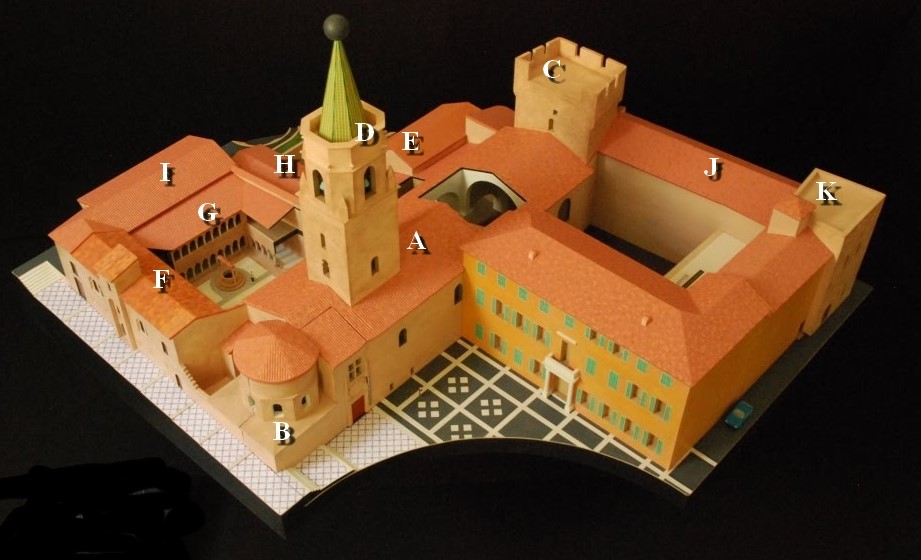
A-Cathedral.
B-Baptistery.
C-Chevet tower.
D-Steeple.
E- Vestry.
F-Provost’s quarters.
G-Cloister.
H-Chapterhouse.
I-Canonical residences.
J-Bishop’s palace.
K-Palace tower.
Pict. 36. Map of Fréjus episcopal grounds
1-Ancient. 2-Mid-11th century. 3-11th century, late 11th century-early 12th century. 4-12th century. 5-12th century. 6- 14th century and later.
- Notre Dame Cathedral (Our Lady’s cathedral). B-St Stephen’s church. C-Baptistery
D-Cloister. E-Palace.
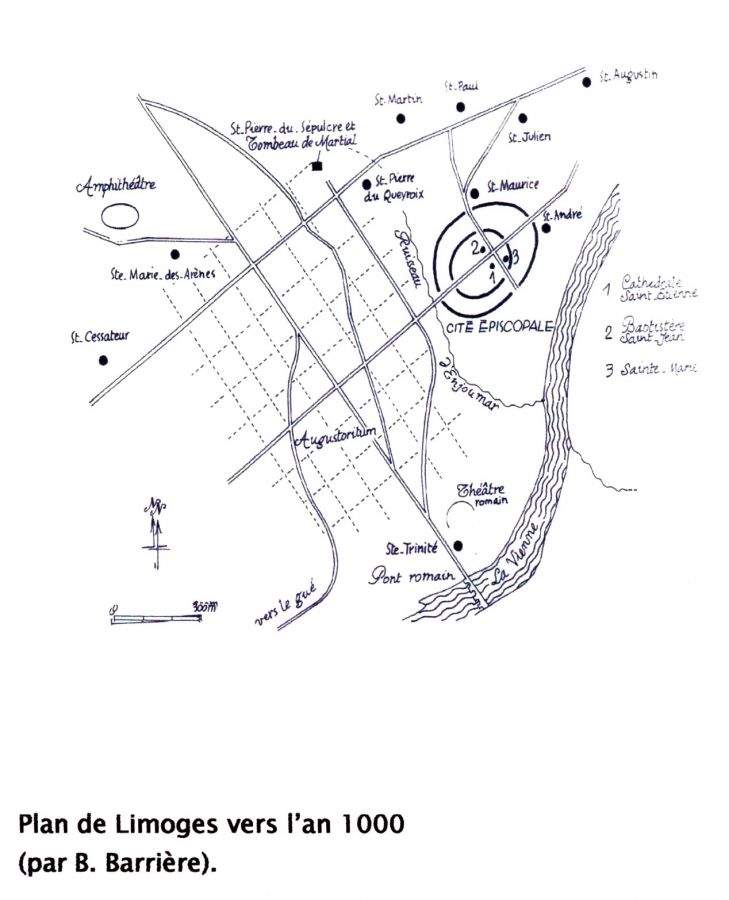
Map of Limoges ca. 1000 AD (Bernadette Barrière)
The baptistery is located in the heart of the episcopal city, right on a former decumanus* of the ancient city of Augustoritum.
* decumanus : an east-west oriented road in a Roman city.
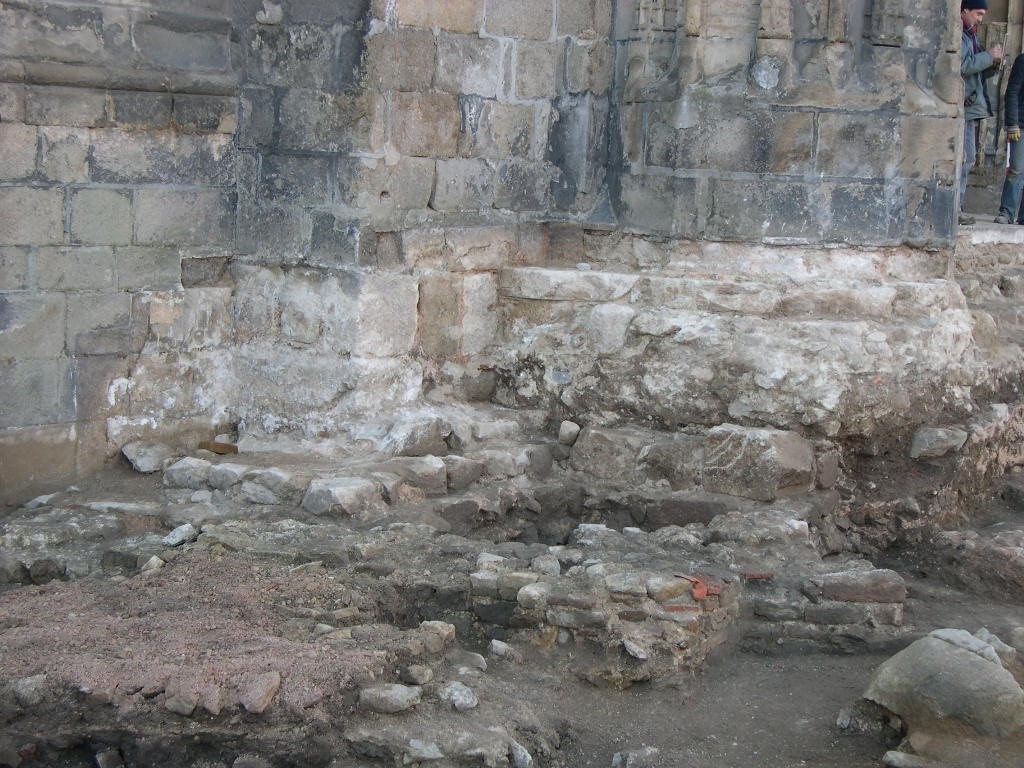
On this photograph the whitish stones correspond to the remnants of the north-east arm of the Romanesque cathedral north transept.
One can infer from the archaeological discoveries that the baptistery underwent severe alterations during the High Middle Ages (repairs on the baptismal font, building of an apse cum altar in the east…)
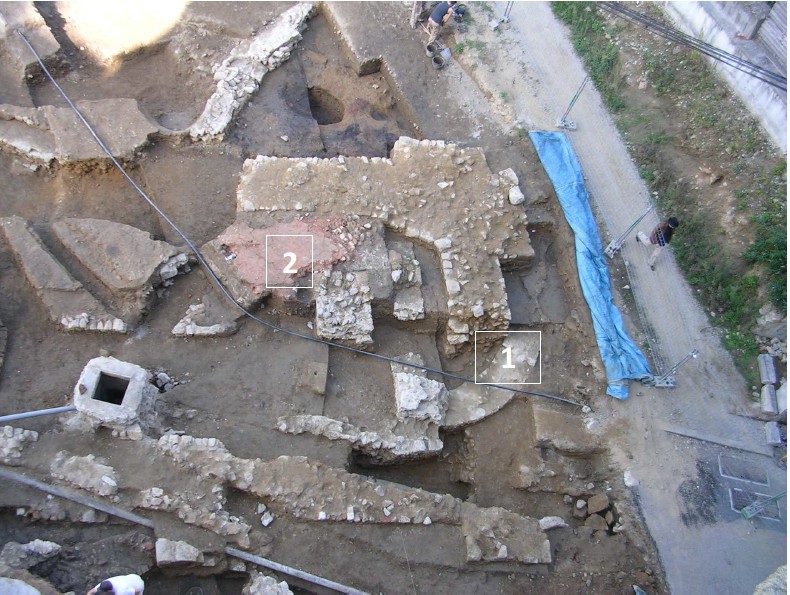
Here was excavated the wall of an apse (1) and an altar (2) probably built when the baptistery was converted into a place of worship.
Early in the 13th century it was levelled and replaced by the churcn of St Jean-within-St Stephen, a parish that was to celebrate all the christenings of the city parishes , from Easter to Whitsuntide, until its destruction during the French Revolution.
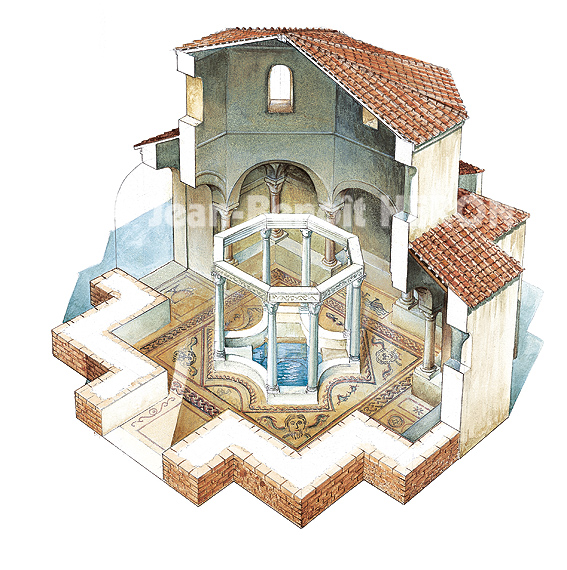
Project for the reconstruction of the baptistery of Mariana, in Corsica (first published in the magazine Le Monde de la Bible, © Jean-Benoit Héron,1996).
St JOHN’s BAPTISTERY
The word baptistery cannot be dissociated from Christian initiation, the Church Fathers using the words piscina, bath, fonts to refer to the running waters or the bowls in which baptism was administered. Consequently, in the Christian tradition, a baptistery is the place where one receives the sacrament of baptism, thus entering the Christian community. The first baptisteries were built in the 3rd century. One of the most ancient that have been discovered is that of Doura Europos (Syria), built before 256 AD (under Roman emperors Decius and Valerian)
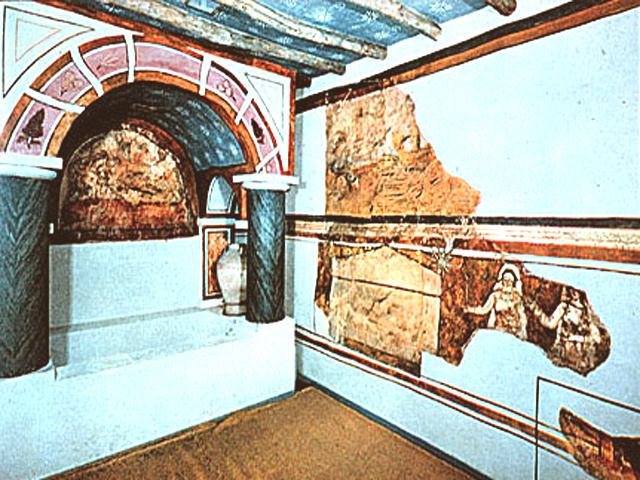
Baptistery in the domus ecclesia (Christian house ) of Doura Europos, early 3rd century AD (mural painting).
In France the first baptisteries were built in the 5th century when the western Roman empire was disappearing before the Middle Ages (the last Roman emperor was deposed by the « barbarians » in 476 AD).They are at Fréjus (département of Var), Poitiers (Vienne), Rheims (Marne) and…Limoges.
It was indeed during a campaign of excavation started in August 2005 that the remnants of a baptistery —quite a remarquable place in many ways— were unearthed in front of the northern portal of the cathedral, on place St Étienne, Limoges. It is very certainly one of the oldest buildings of that kind in this country, carbon-14 dating determining its age up to before 440 AD (it was probably built in the first quarter of the 5th century) .
Comparatively spacious (ground surface : 280 square metres) it develops as a hexagone round a centre whereas most other episcopal baptisteries built in the days of the Gauls are octagonal ; that is extremely uncommon and witnesses to the notoriety of the seat of Limoges.
In the centre of the edifice, the piscina opens onto six quadrangular rooms similar to side-chapels, another original feature . The fragments of porphyry (an igneous, vitreous stone) and marble unearthed suggest that those rooms were richly decorated.
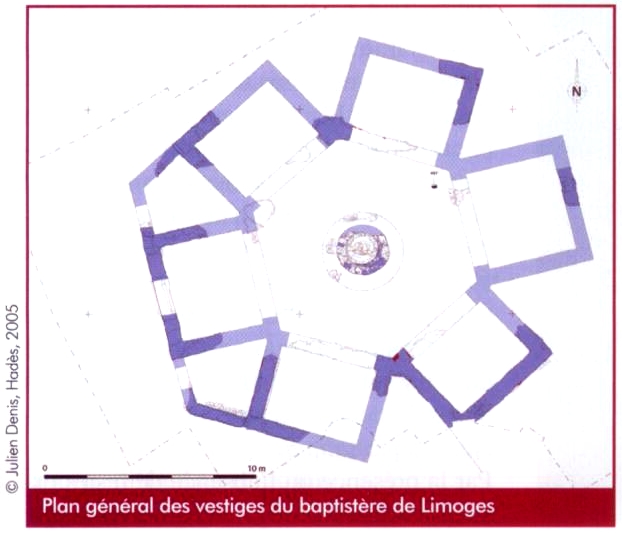
Here are shown the remnants of the baptistery side-chapels, as seen from the cathedral terrasses .
Early in the 13th century it was levelled and replaced by the churcn of St Jean-within-St Stephen, a parish that was to celebrate all the christenings of the city parishes , from Easter to Whitsuntide, until its destruction during the French Revolution.
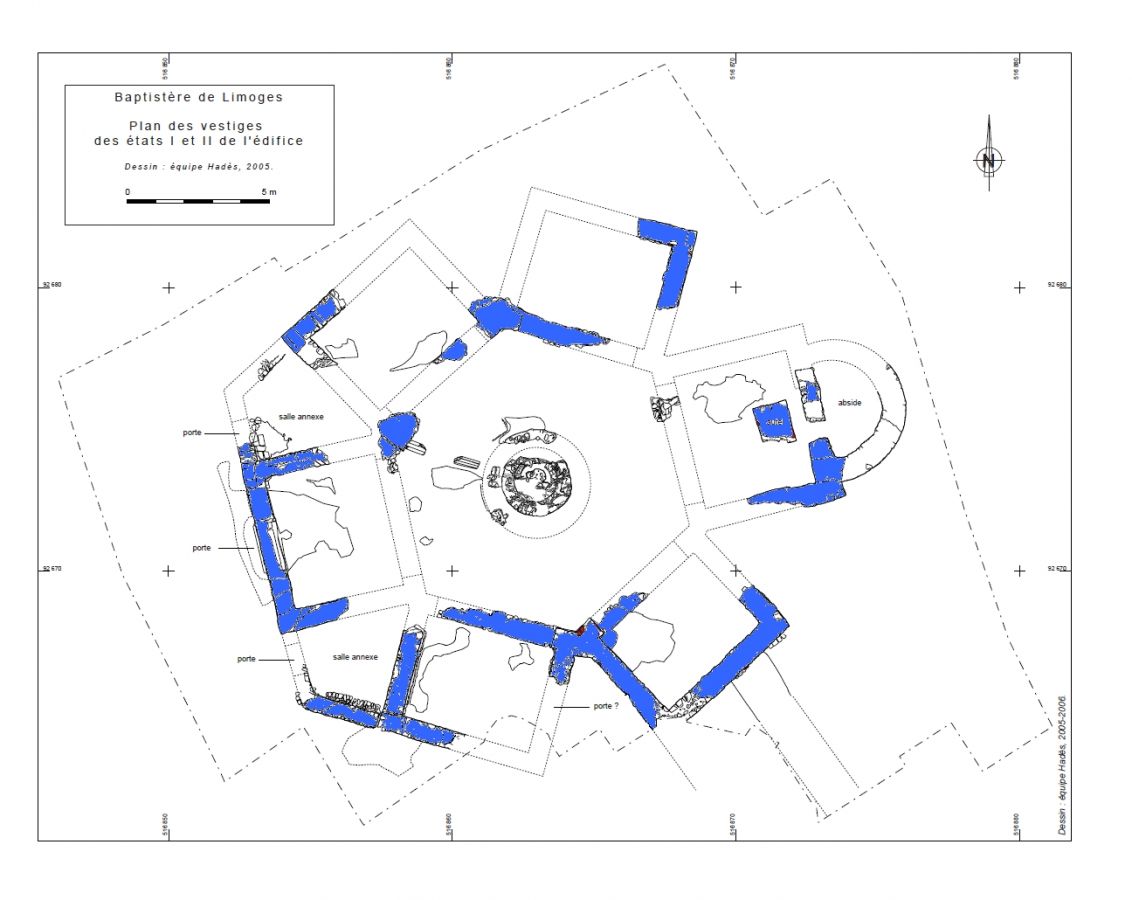
This ground-plan brings out the very particular hexagonal lay out of the baptistery.
In the centre the baptismal font is surrounded by six hexagonal chapels which could serve for instruction, or as vestries, as rooms for the two baptismal anointments as well as for conferring the white vestment upon neophytes.
A wall links up the three western chapels thus creating a vast façade with a small room in each angle.
The parts in dark blue are the remnants excavated. The rest is a reconstruction.
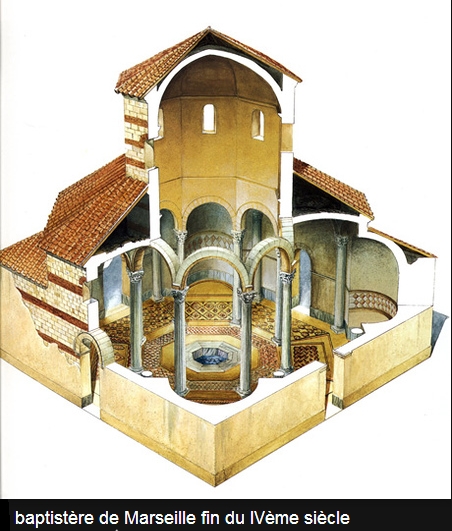
Baptistery, Marseilles, end of 4th century AD
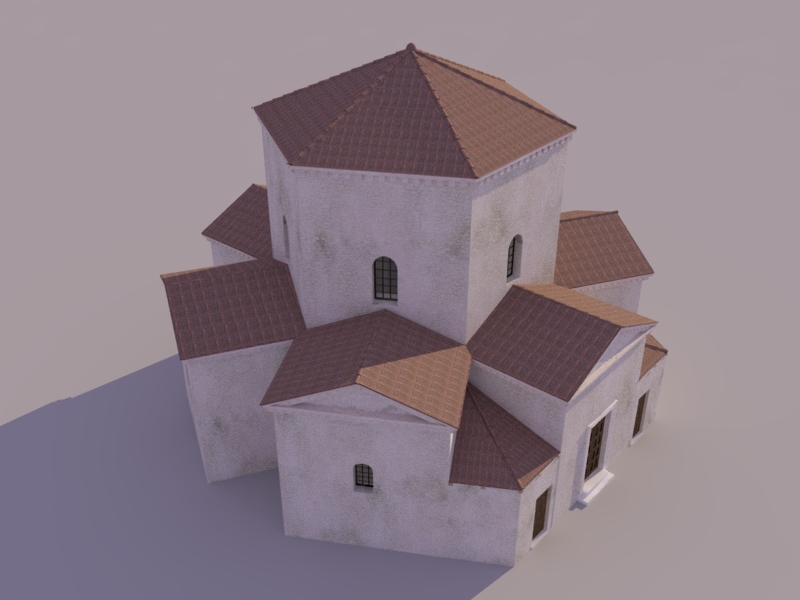
3D reconstruction of the baptistery in Limoges (by Cyril Lachaud, using Blender software)
